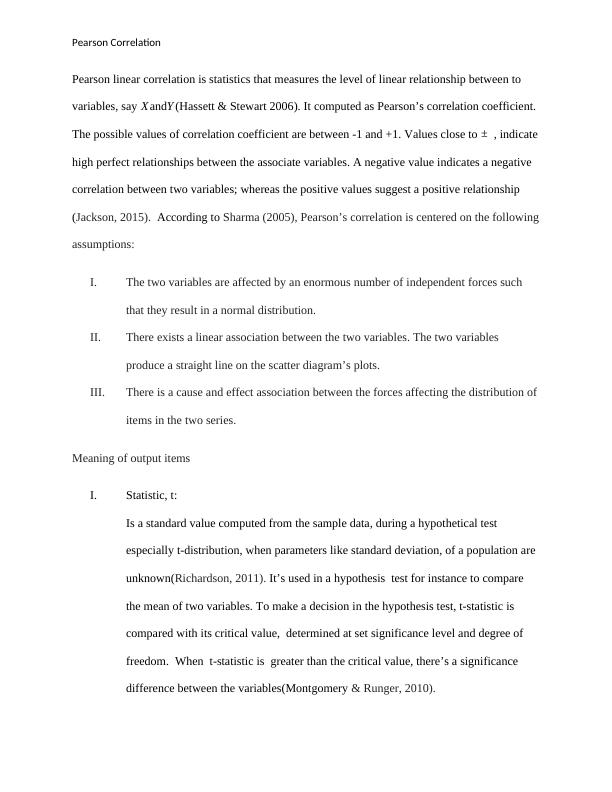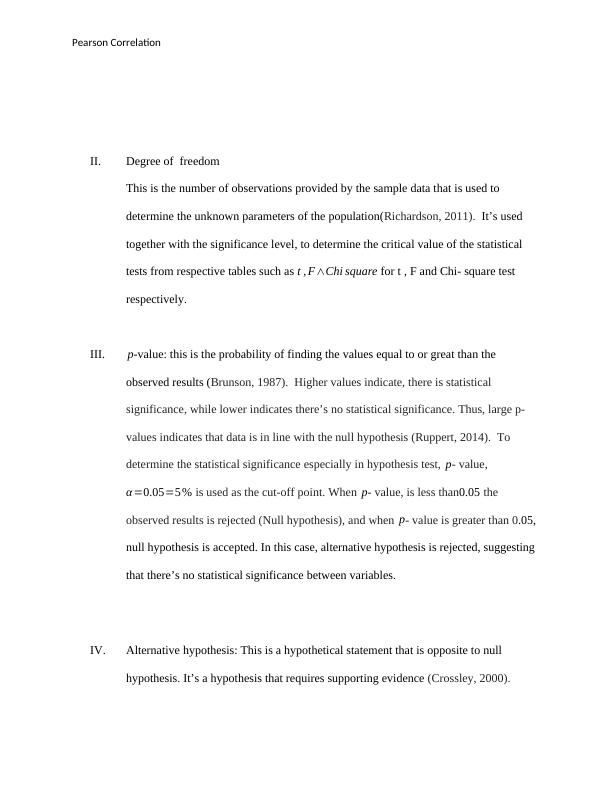Pearson Correlation in Quantitative Reasoning
8 Pages1598 Words497 Views
Added on 2023-06-04
About This Document
This article explains Pearson Correlation in Quantitative Reasoning. It defines Pearson's correlation coefficient and its possible values. It also discusses the meaning of output items like Statistic, t, Degree of freedom, p-value, Alternative hypothesis, and 95% confidence interval. The article explains how to perform a hypothesis test and interpret the results. It concludes that the sample data is not sufficient to make significant statistical decisions on the correlation between X and Y.
Pearson Correlation in Quantitative Reasoning
Added on 2023-06-04
ShareRelated Documents
End of preview
Want to access all the pages? Upload your documents or become a member.
Descriptive Statistics and Probability - Basic Statistics
|11
|1246
|306
Understanding Pearson Linear Correlation
|6
|1390
|141
Pearson Linear Correlation Test: Assumptions and Key Concepts
|4
|664
|141
Correlation and Chi-Square Tests in Statistics
|8
|940
|446
Analysis of Ice Thrust, Muzzle Velocities and Coconut Palm Production using Statistics
|18
|3631
|187
Statistics Study Material
|8
|1143
|97



